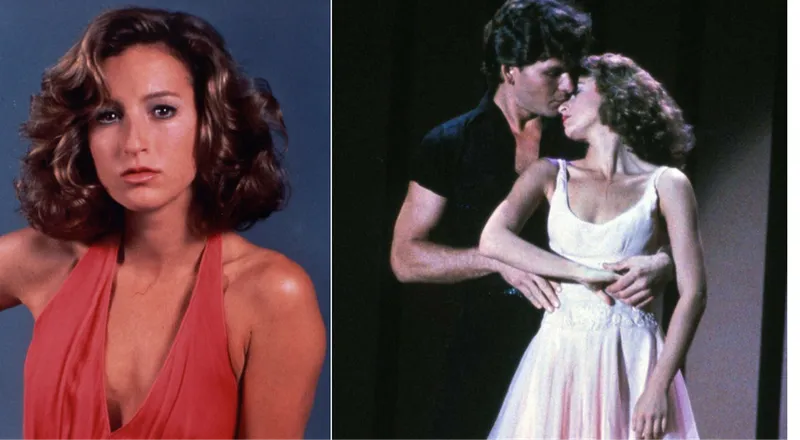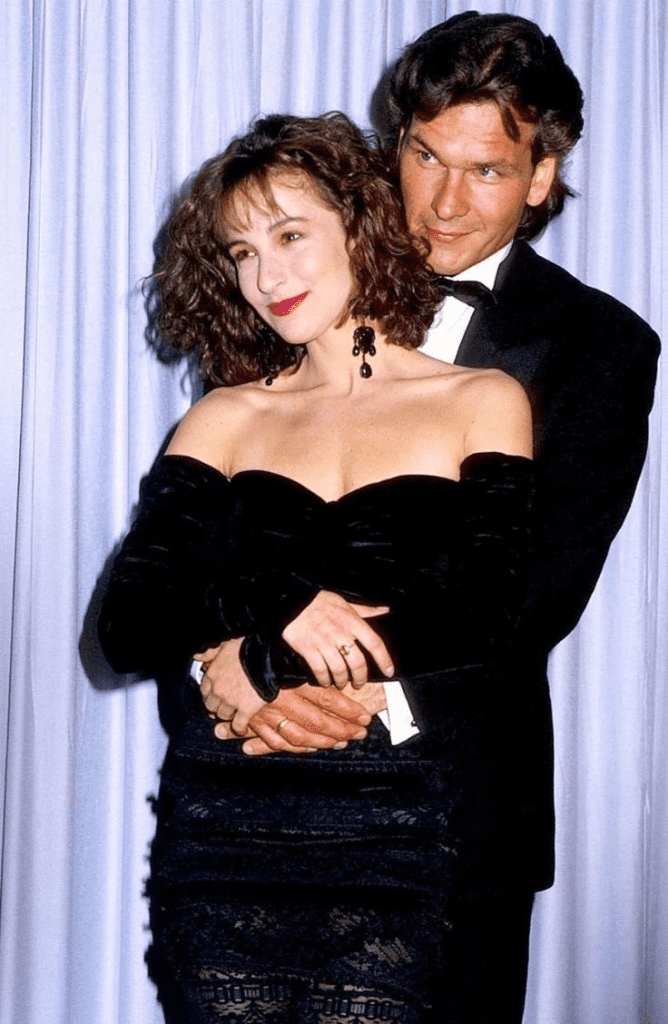If you were around in the late ’80s, you remember Dirty Dancing. It wasn’t just a movie—it was a movement. And at the center of it all was Jennifer Grey as Frances “Baby” Houseman, a wide-eyed, defiant teenager who danced her way into our hearts. Her performance was electric. Raw. Real. The kind that doesn’t just make you fall in love with the character—it makes you root for the actress behind it.
And just when Jennifer Grey seemed ready to dominate Hollywood, she vanished.

From Breakout to Breakdown: When Success and Tragedy Collide
Let’s rewind to 1987. Dirty Dancing was about to blow up. Jennifer was poised for superstardom. The press loved her. The fans adored her. She even snagged a Golden Globe nomination. But just before the premiere, she and her then-boyfriend, Matthew Broderick, went on vacation in Ireland. What should’ve been a relaxing getaway turned tragic.
Their car collided with another vehicle in a devastating crash. Jennifer walked away with minor injuries. But emotionally? She was shattered. Two people lost their lives in that crash. While Broderick faced legal fallout, Jennifer was consumed by survivor’s guilt. And days later, as her face lit up billboards around the world, she was quietly battling shock, trauma, and a deep sense of unease.
How do you smile for cameras when you’re grieving inside?
Video: Actress Jennifer Grey speaks candidly about past relationships, plastic surgery
Success Felt Like a Lie—So She Stepped Away
While fans danced in theaters and memorized every line, Jennifer was falling apart inside. The applause felt hollow. The fame, unearned. “It didn’t feel good to be the toast of the town,” she would later admit.
The world saw a rising star. But Jennifer saw someone who couldn’t enjoy it. Instead of chasing bigger roles, she stepped back. Not because she wasn’t talented, but because her spirit was broken. The spotlight became too heavy.
A Star Born from Broadway Bloodlines

Jennifer Grey wasn’t just some Hollywood discovery. She was the daughter of Joel Grey, the legendary Broadway actor who lit up stages with his singing, dancing, and endless charisma. Performing ran in her blood. She trained at the Dalton School, then the Neighborhood Playhouse, waiting tables in between auditions just like every other dreamer in New York.
She worked for her moment—and Dirty Dancing should’ve been her springboard. Instead, it became the high point that was followed by years of quiet.
The Surgery That Changed Everything

In the early ’90s, Jennifer made a decision that would unknowingly hit the brakes on her career. She had a nose job—actually, two. The results were so drastic, casting directors didn’t recognize her. She joked that she went in famous and came out anonymous. It was like entering witness protection.
In a town that often rewards “fixing” perceived flaws, Jennifer’s transformation backfired. Hollywood didn’t know what to do with her new face. She became a cautionary tale about beauty standards and identity—how trying to conform can sometimes erase the very thing that made you stand out.
The Long Silence—and the Unexpected Return
Video: Jennifer Grey Talks About Her Relationship with Patrick Swayze
For years, she stayed mostly out of the spotlight. A few roles here and there. A guest appearance on Friends. But nothing stuck. Then came 2010—and a full-circle moment.
Dancing with the Stars.
The woman who made “Time of My Life” iconic was finally dancing again. And she wasn’t just participating—she was pouring her heart onto that dance floor. Week after week, Jennifer Grey reminded America of what they’d loved all along. She didn’t just win the competition—she won back a piece of herself.
“It felt like having a steak after 23 years on a diet,” she said. And honestly? You could feel it.
Reclaiming Her Story with Strength and Grace

After Dancing with the Stars, Jennifer didn’t chase big Hollywood comebacks. Instead, she chose meaningful work—indie films like Untogether, and TV projects like Red Oaks. She stopped trying to fit the mold and started choosing roles that spoke to where she was in life.
She began speaking more openly about the pain she carried, the choices she made, and how she learned to love herself again. That vulnerability didn’t just make her relatable—it made her powerful.
The Woman Behind “Baby” Finally Took the Lead
Video: Dirty Dancing – Time of my Life (Jennifer Grey with Patrick Swayze)
Jennifer Grey isn’t trying to be Baby anymore. She’s grown, healed, and become someone far more complex—and far more inspiring. Her story isn’t a tabloid headline. It’s a journey of loss, reflection, transformation, and ultimately, rediscovery.
She’s a reminder that not every comeback needs fireworks. Sometimes, the quiet return is the most beautiful. The kind where someone finally feels whole again.
Conclusion: Jennifer Grey’s Legacy Isn’t About Fame—It’s About Truth

Jennifer Grey didn’t fade away. She stepped back, processed her pain, and chose to return on her own terms. That takes strength most of us can’t fathom. Her journey shows that success isn’t always about what the world sees—it’s about what you survive, what you learn, and how you rise again.
At 62, she’s no longer just the girl who carried a watermelon. She’s a woman who carried herself through unimaginable challenges—and still found a way to dance again. And that? That’s a legacy worth applauding.


